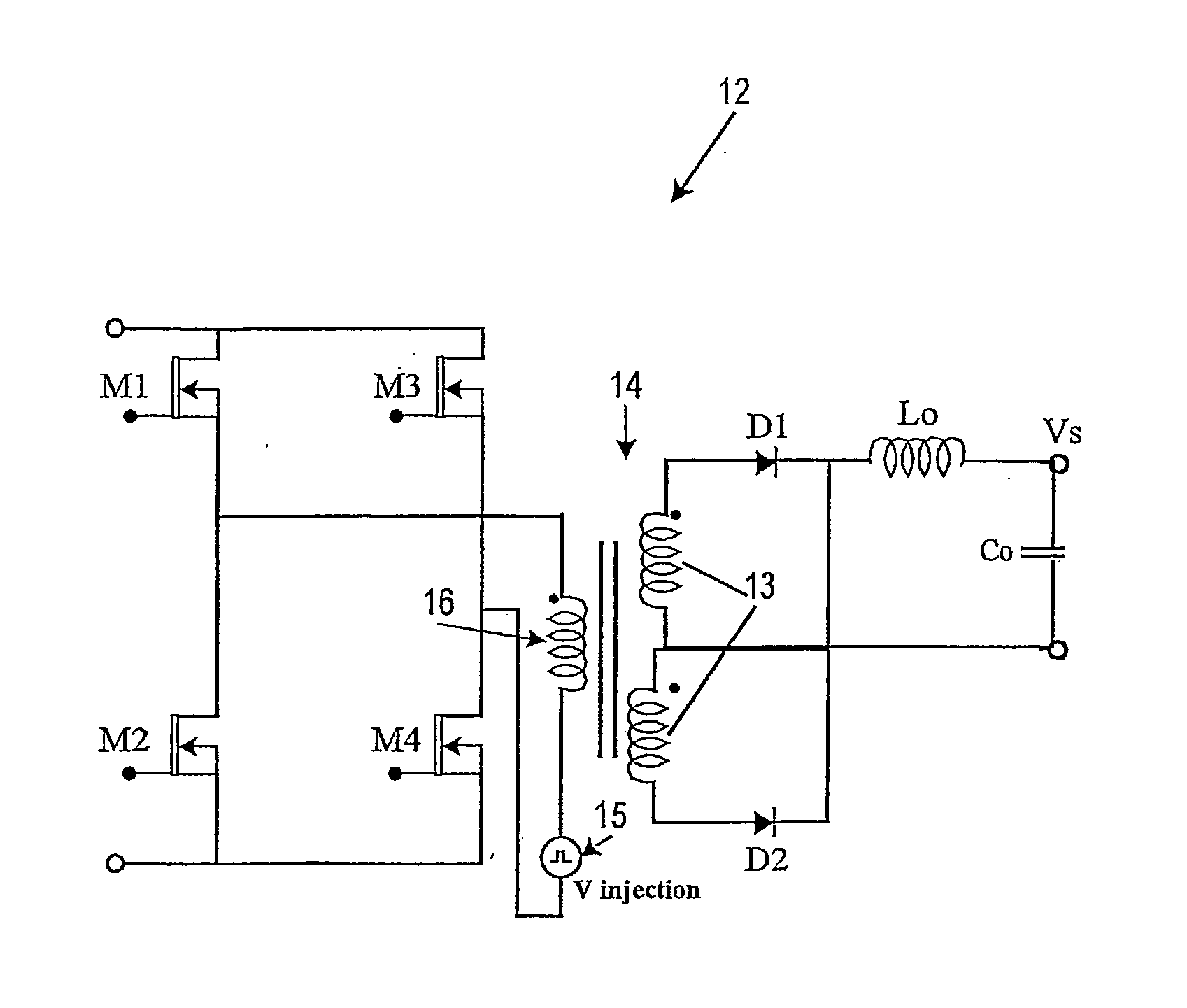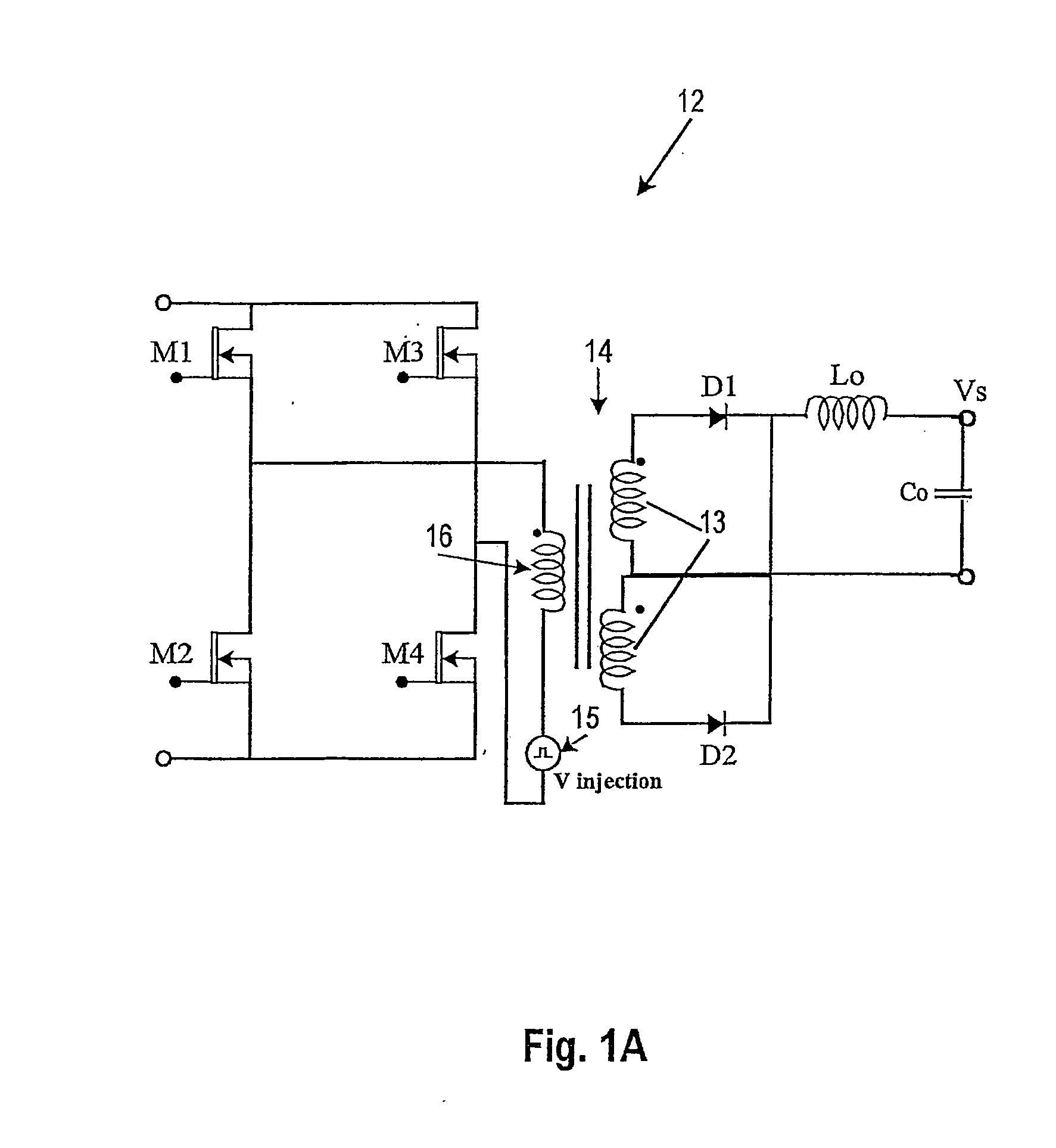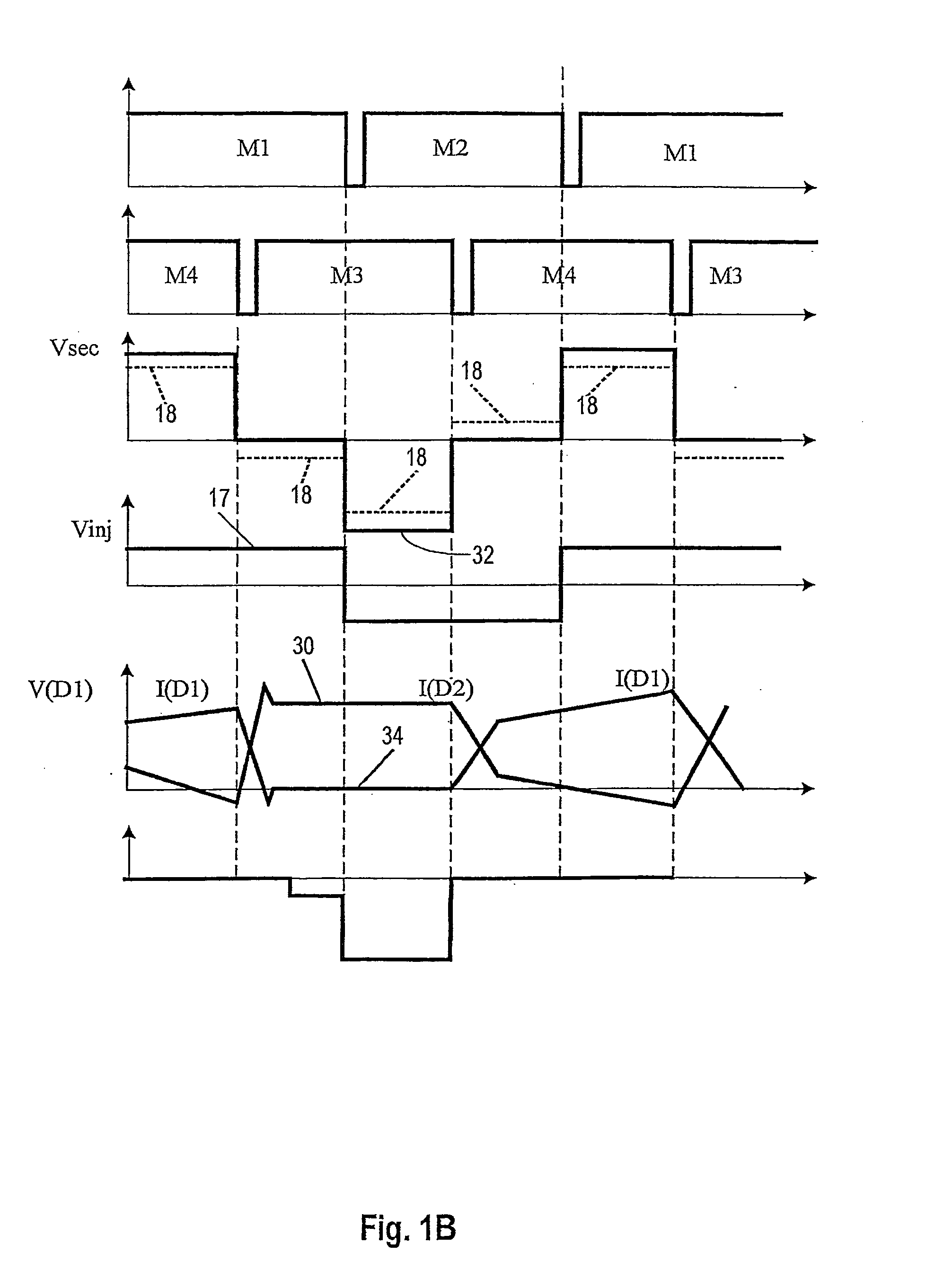Soft switching converter using current shaping
a converter and current shaping technology, applied in the direction of ac-dc conversion, dctodc converters, dctodc inverters, etc., can solve the problems of reverse recovery losses and reverse recovery losses, and achieve the effect of reducing the negative impact of reverse recovery
- Summary
- Abstract
- Description
- Claims
- Application Information
AI Technical Summary
Benefits of technology
Problems solved by technology
Method used
Image
Examples
Embodiment Construction
[0030] The present invention addresses the goal of eliminating the reverse recovery losses while maintaining continuous conduction mode in an output choke of a converter. The general concept is described in connection with FIG. 1A. It consists in adding an additional AC voltage source, which will generate a low voltage square waveform signal. FIG. 1A is a simplified schematic, and FIG. 1B illustrates key waveforms, both for the topology according to this invention. The circuit 12 of FIG. 1A is a typical full bridge, phase shifted topology, with an additional low voltage AC source 15 placed in series with a primary winding 16 of a power transformer 14.
[0031] In FIG. 1B, the conventional control signals for the primary switching elements M1, M2, M3 and M4 are also depicted in the plots so labeled. The injected AC voltage, Vinj, will alter the voltage Vsec in the secondary 13 of the transformer as is depicted by the dotted lines 18 in FIG. 1B.
[0032] During the time wherein M1 and M4 ...
PUM
 Login to View More
Login to View More Abstract
Description
Claims
Application Information
 Login to View More
Login to View More - R&D
- Intellectual Property
- Life Sciences
- Materials
- Tech Scout
- Unparalleled Data Quality
- Higher Quality Content
- 60% Fewer Hallucinations
Browse by: Latest US Patents, China's latest patents, Technical Efficacy Thesaurus, Application Domain, Technology Topic, Popular Technical Reports.
© 2025 PatSnap. All rights reserved.Legal|Privacy policy|Modern Slavery Act Transparency Statement|Sitemap|About US| Contact US: help@patsnap.com



